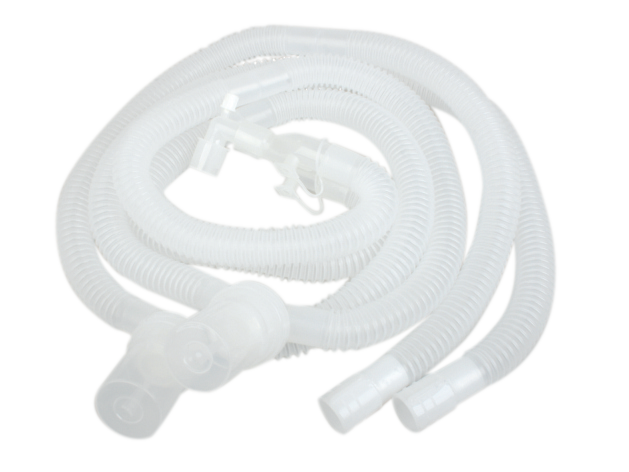
Breathing Circuit Ref. No.:NMR103415
Anesthesia is a complex process but its success relies heavily on the breathing circuit. In this article, we'll explore what role the breathing circuit plays in patient anesthesia and why it's so important to get right. We'll also discuss the different ways of excluding carbon dioxide from the circuit and how these methods can impact patient safety. So make sure to read on if you're interested in learning more about breathing circuits for anesthesia!
There are different types of breathing circuits available for patient anesthesia, and the right type should be selected based on the specific needs of the patient. Some common types of breathing circuits include:
1. Closed-circuit systems: These systems are typically used for patients who require a high degree of control over their breathing. The closed circuit allows the anesthesiologist to closely monitor the patient's breathing and make any necessary adjustments.
2. Semi-open systems: These systems offer more flexibility than closed-circuit systems, and are often used for patients who are less critically ill. Semi-open systems allow the patient to breath spontaneously, while still providing some level of control and monitoring by the anesthesiologist.
3. Open systems: These systems are the most basic type of breathing circuit, and are typically used for healthy patients undergoing routine procedures. Open systems allow the patient to breathe freely, with no control or monitoring by the anesthesiologist.
There are several different types of breathing circuits available for use in patient anesthesia. Each type has its own advantages and disadvantages that should be considered when selecting the best option for a particular patient. One common type of breathing circuit is the Mapleson-Higgins system. This system is typically used for short procedures, as it does not have a CO2 absorbent. The advantage of this system is that it is less likely to cause respiratory acidosis than other types of circuits. However, the Mapleson-Higgins system can be more difficult to use and may not provide as much ventilation as other options. Another common type of breathing circuit is the Jackson-Rees system. This system uses a CO2 absorbent, which makes it more appropriate for longer procedures. The advantage of this system is that it provides more consistent ventilation than the Mapleson-Higgins system. However, the Jackson-Rees system can be more difficult to use and may cause respiratory acidosis in some patients. The choice of breathing circuit will ultimately depend on the individual patient's needs. It is important to discuss the options with your anesthesia provider to ensure that you select the best possible option for your care.
Breathing circuits are an important part of patient anesthesia. There are many different types of breathing circuits, each with its own advantages and disadvantages. The type of breathing circuit you use will depend on the type of surgery you are having, the size of the patient, and the preferences of the anesthesia provider. One common type of breathing circuit is the Mapleson-Higgins circuit. This circuit is often used for small procedures on children or adults. It is simple to set up and does not require a lot of equipment. The disadvantage of this circuit is that it can cause high levels of carbon dioxide in the blood if the patient breathes too fast. Another common type of breathing circuit is the Jackson-Rees circuit. This circuit is often used for larger procedures or for patients who are at risk for high levels of carbon dioxide in their blood. The advantage of this circuit is that it allows the anesthesia provider to control the amount of carbon dioxide in the blood. The disadvantage of this circuit is that it can be more difficult to set up and requires more equipment. The type of breathing circuit you use will depend on the type of surgery you are having, the size of the patient, and the preferences of the anesthesia provider. Talk to your anesthesia provider about which type of breathing circuit is right for you.